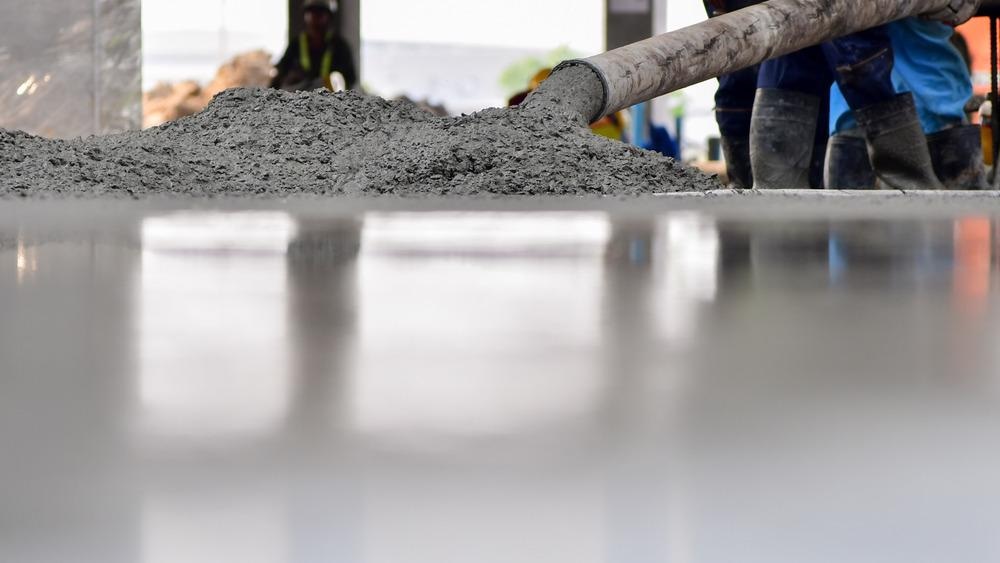In a study published recently in the Journal Materials Today: Proceedings, the development, manufacture and properties of concrete made with nano alumina are discussed.

Study: Resistance against sulphate attack in concrete by addition of nano alumina. Image Credit:
Bannafarsai_Stock/Shutterstock.com
Concrete and its uses
Concrete is the most commonly utilized compound and is a critical part of the structure in the construction of a worldwide network.
It is composed of three main parts: water, aggregate, and plaster. In 1824, Joseph Aspedin devised the process for producing Cementitious materials, and in 1849, he produced concrete structures, which was the most significant step forward in contemporary structural concrete.
Concrete is utilized in development more than twice as much as all other concrete structures combined. Because of the scarcity of natural assets, structural engineers have designed tall structures with gigantic concrete members, and material experts are now working to produce high-strength substances for the construction sector to optimize the sizes of different concrete elements.
The investigators have used by-products from numerous sectors to improve the tensile properties of concrete. These substances are known as admixtures and some of the most frequent admixtures.
Focus of Research
The current study provided an overview of some significant nanomaterials research that has been conducted.
The use of nano-silica and silica fumes to improve the tensile qualities of concrete as well as its resilience to water and chloride infiltration was shown.
Some researchers have investigated the effects of nanomaterials such as silicon, aluminum, and iron oxides on the fracture toughness of mortars that included large amounts of fly ash, indicating promising results.
Compared to the independent substitution of nano lime and fly ash, the mixture of micro fly ash and nano limestone improved the durability characteristic of traditional concrete samples.
Following the aforementioned studies, it has been demonstrated that alternate nanoparticles such as silica, alumina, lime and fly ash have proven to be excellent substitutes for concrete in the production of better versions of the end product compared to traditional cement.
Furthermore, the sulfate assault on cement has been shown to have a variety of negative consequences, including the structural damage of concrete.
The primary goal of this research was to raise the durability of concrete by including micro aluminum matrix into the mix, as well as to evaluate the sulfate tolerance gained by employing microscopic particles in lieu of concrete in the concrete mix design, increasing the tensile properties of concrete a little bit more.
Achieved Results
It has been discovered that micro alumina powder is beneficial in enhancing the tensile properties of high-strength concrete grade M55.
According to the research findings, nano alumina provides superior resistance to sulfate assault from the soil, groundwater, and saltwater when shielding concrete from these sources.
The test findings found that a proportion of total reduction in shear strength was found with Na2SO4 solution when compared to other materials, and a proportion reduction in strength properties was noticed with Na2SO4 solution when particularly in comparison to correlating mix at 2.3% substitute of CNA substitute.
In Na2SO4 cementitious materials, a 4.09 wt.% reduction was recorded, and a 1.65 wt.% reduction was seen in Na2SO4 in comparison to the comparable mix when 2.3 % CNA was added.
Moreover, it was discovered that the proportion loss in strength properties was detected 7.25 % in MgSO4 compared to other materials and 3.51 % in MgSO4 compared to the equivalent mix when 2.3 %t substitution of CNA was used.
Nano alumina was found to be a very efficient agent for enhancing the ultimate strength properties of concrete.
The optimal dose of nano aluminum matrix for boosting the effectiveness of elevated concrete exposed to sulfate assault was also found.
When nano aluminum granules were used as a substitute agent for concrete, the tensile properties of M55 grade improved by 20.6 per cent at the optimal dose of 2.3 per cent nano aluminium matrix.
The highest salt resistance of the material was similarly seen at 2.3 per cent CNA after 28 days of exposure to the elements. It was also concluded that using Al2O3 nanoparticles as a partially replacing cement up to 2.3 per cent might speed up the development of crystallized Ca (OH)2 gels at the earliest stages of the process and hence boost the strength properties of the final product.
Continue reading: How a World-First Graphene Solution Will Enhance Streets in the UK.
Reference
Sathe, S., Kangda, M. Z., & Amaranatha, G. (2022). Resistance against sulphate attack in concrete by addition of nano alumina. Materials Today: Proceedings. Available at: https://www.sciencedirect.com/science/article/pii/S221478532200150X?via%3Dihub
Disclaimer: The views expressed here are those of the author expressed in their private capacity and do not necessarily represent the views of AZoM.com Limited T/A AZoNetwork the owner and operator of this website. This disclaimer forms part of the Terms and conditions of use of this website.